Colorful Sugar Water Density Tower
This is one of those great demonstrations you could set up in the middle of a crowd and everyone would be able to see everything. If […]
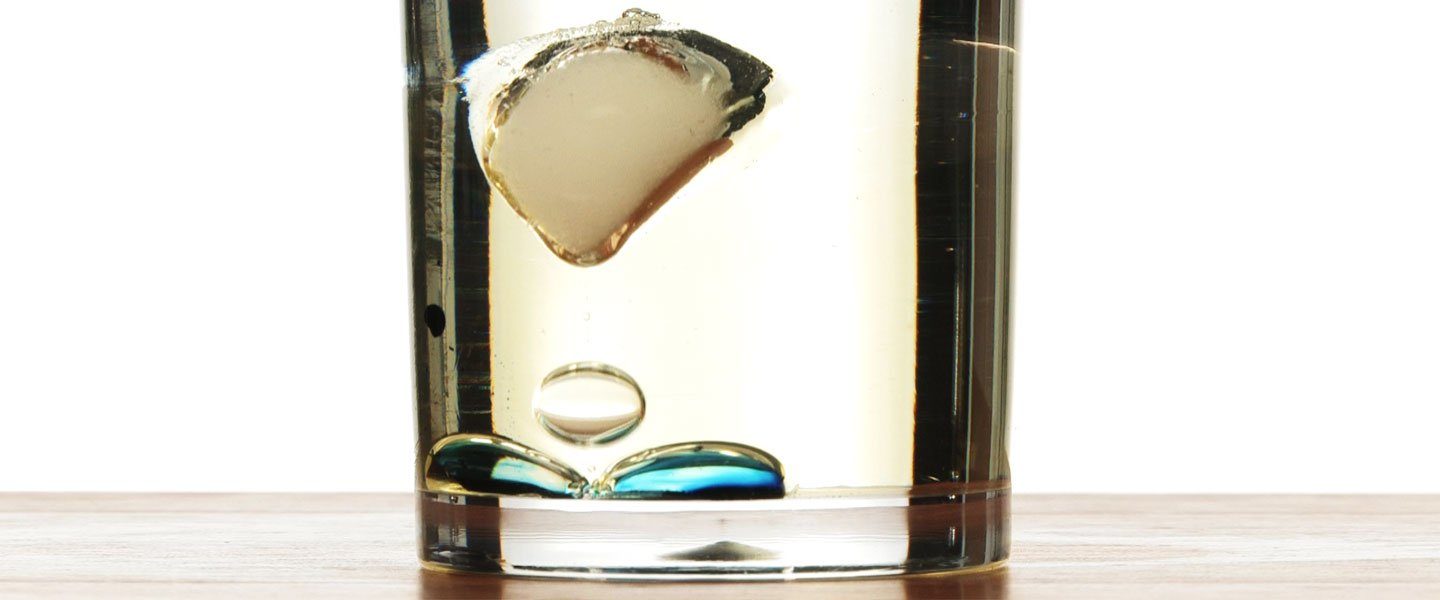
You know that materials have different densities. For a perfect, amazing example of how to demonstrate these different densities, check out our 9 Layer Density Column. You can see that honey and lamp oil have completely different densities, and so do the liquids and solids in between them. All those materials seem to have a set density, but did you know that you can change the density of some materials? We’ll show you a cool way to see a change of density in action with the Light Ice, Heavy Water experiment.

Add two drops of food coloring to a clear, empty container.
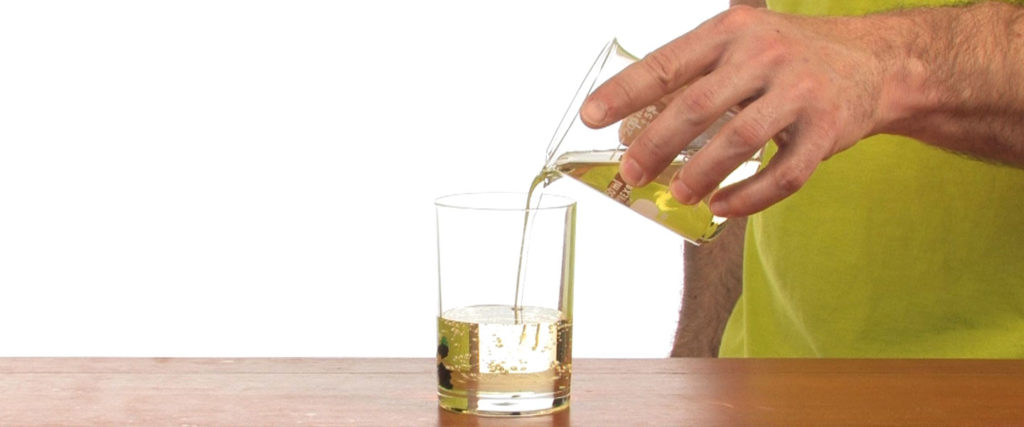
Fill half of the container with vegetable oil.
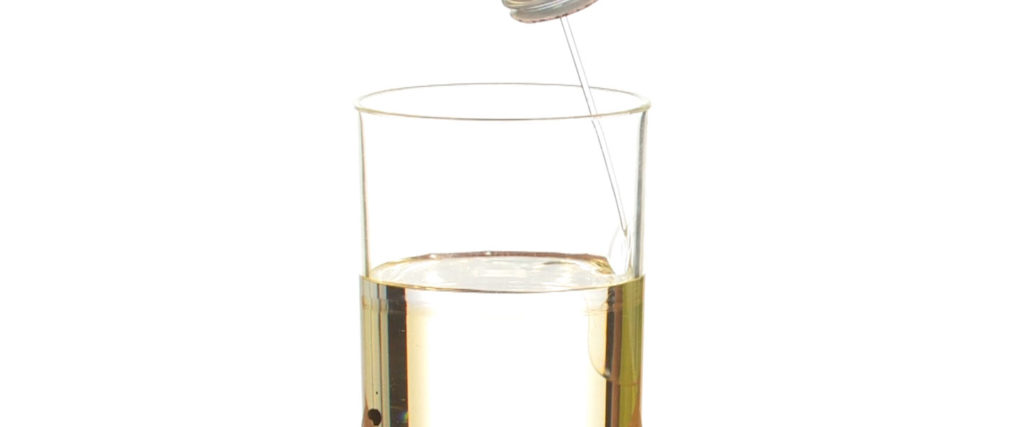
Fill the rest of the container with baby oil, leaving just a little bit of space on top.
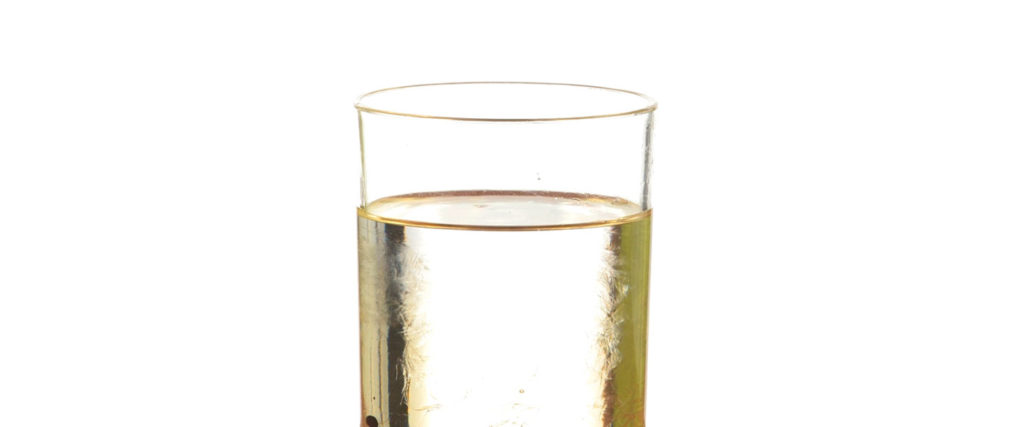
Take a moment to notice how the two oils mix together. It may be hard to tell, but the vegetable oil settles below the baby oil.
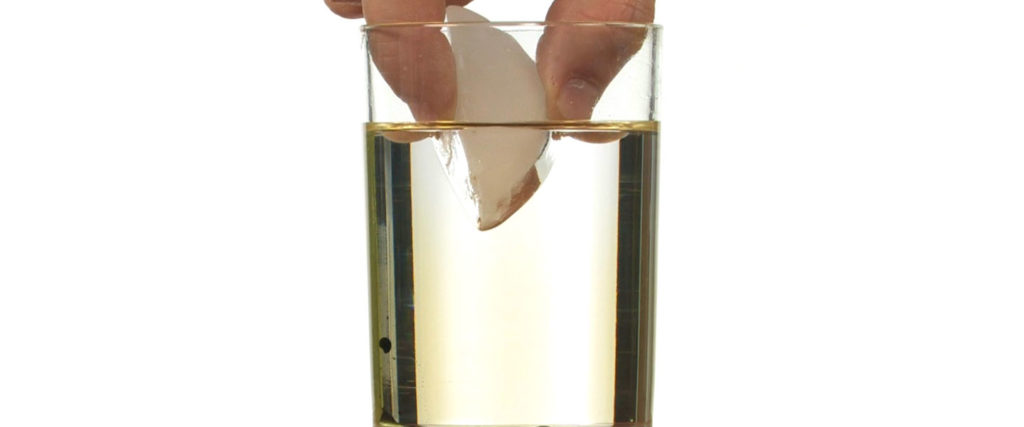
Gently drop an ice cube into the container. It sits right in the middle of the container without sinking to the bottom or floating to the top!
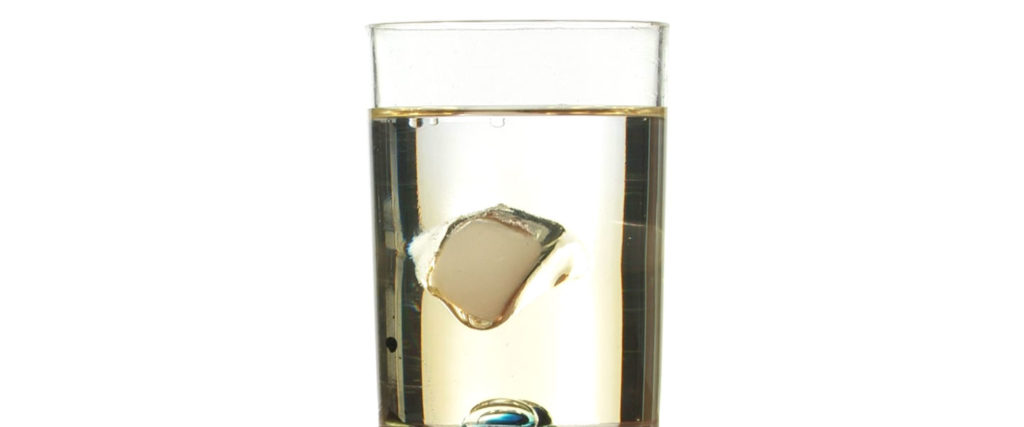
After a little while, you’ll see a single drop begin to melt away from the ice cube. It looks like it is frozen in time as it clings to the ice cube until the very end, when it sinks straight to the bottom of the glass.
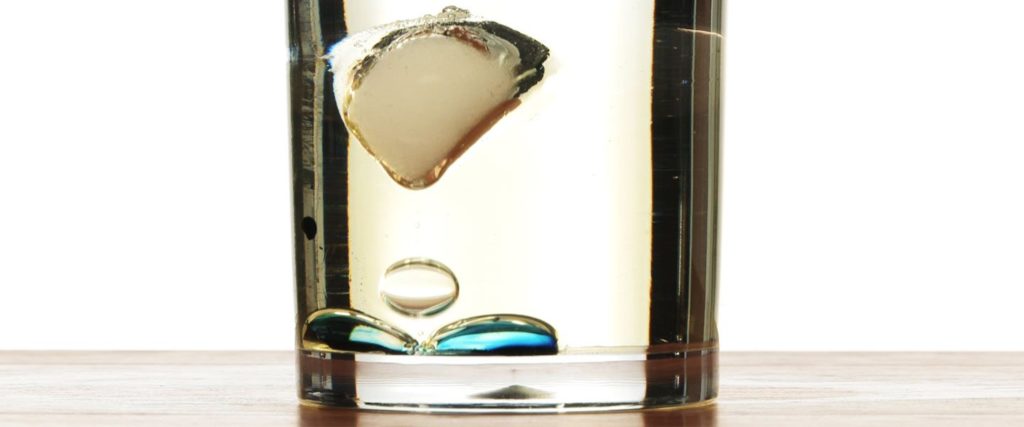
As the ice cube melts, drop after drop of water heads to the bottom of the container, mixing with the food coloring.
The basis of the Light Ice, Heavy Water experiment relies on density. Density = mass ÷ volume, which essentially equates to how many atoms are within a certain space. It is tough to see, but when you add baby oil to the vegetable oil in the container, the baby oil settles on top of the vegetable oil. This is because baby oil is a less-dense liquid than vegetable oil. That’s where water comes in to the picture.
As you likely know, ice cubes are frozen bricks of water. Water reacts unlike almost every other material on earth when it freezes – it becomes less dense. This is a very unique trait of water and some types of rubber, as most other materials become more dense when they cool and freeze. The lower density of the ice makes it less dense than vegetable oil, so the ice sits in the middle of the container right on top of the vegetable oil. As the ice melts, the liquid water (which has a higher density than the ice) drops to the bottom of the container as it is more dense than the vegetable oil.